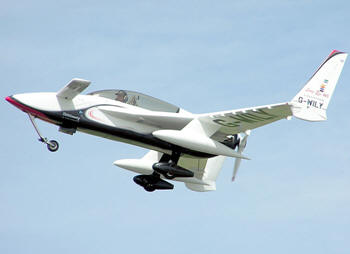 |
|
|
|
|
|
|
||||||||||||||||||||||||||||||||
|
Accident case studies indicate that not all builders of E-AB
aircraft perform a thorough flight test program or create a
detailed flight manual during Phase I testing. The study found
that risks to E-AB aircraft could be reduced by verifying that
all E-AB aircraft are adequately tested according to a flight
test plan, and that the resulting test data are used to create
an accurate and complete aircraft flight manual. Further, a
functional test of the aircraft fuel system could identify
design deficiencies, leaks and malfunctions prior to flight.
From 2001-2011, the accident rate of E-AB aircraft was more than
twice as high as comparable GA aircraft in similar flight
operations. During that period, the fatal accident rate was more
than three times that of comparable GA aircraft. The NTSB
undertook the study to identify opportunities for improvements
to the E-AB safety record.
Study findings also included the following:
- In comparison with similar non-E-AB aircraft, a much higher
proportion of accidents involving E-AB aircraft occur early in
the operational life of the aircraft.
- E-AB aircraft account for a disproportionate number of total
accidents and an even more disproportionate share of fatal
accidents when compared with similar non-E-AB aircraft
conducting similar flight operations.
- Accident analyses indicate that powerplant failures and loss
of control in flight are the most common E-AB aircraft accident
occurrences by a large margin and that accident occurrences are
similar for both new and used aircraft.
- Structural failures have not been a common occurrence among
E-AB aircraft.
- The majority of E-AB aircraft are now built from commercial
kits, rather than from purchased plans or original designs.
- The E-AB aircraft safety record could be improved by providing
pilots with additional resources to safely perform Phase I test
pilot functions.
The 16 safety recommendations to the FAA and EAA include the
following: require that applicants for an E-AB airworthiness
certificate submit for acceptance a detailed flight test plan to
the FAA and develop an aircraft flight manual with emergency
procedures; develop and offer incentives to encourage E-AB
owners, builders and pilots to complete flight test training and
transition training; develop and publish guidance for the
issuance of a Letter of Deviation Authority to conduct flight
instruction in experimental aircraft; provide guidance for the
use of recorded flight test data for the purposes of flight
testing and for the development of an aircraft flight manual;
and complete development of E-AB transition training resources. |
||||||||||||||||||||||||||||||||||
|
|
||||||||||||||||||||||||||||||||||


